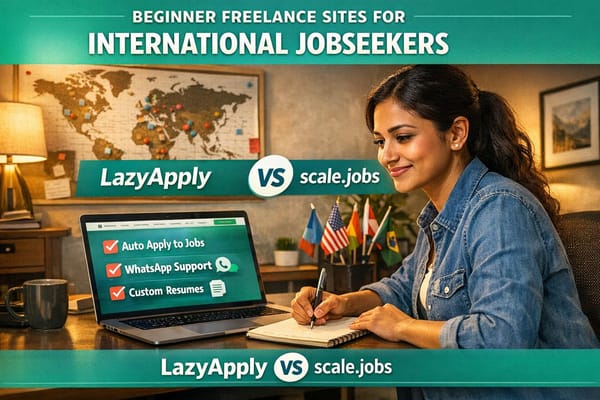What Is a Signature Framework and Why It Matters
Learn how a signature framework can enhance your job search, boost credibility, and streamline your problem-solving process.

A signature framework is a structured system that showcases your unique way of solving problems and demonstrating expertise. It’s like your professional fingerprint, helping you stand out in a competitive job market. Why does it matter? Here’s the key takeaway:
- 93% of job seekers using a framework secured full-time roles within 3 months.
- It shortens job searches by 40% and boosts success through direct applications (47%) and networking (44%).
Benefits of a Signature Framework:
- Clarity and Consistency: Turns chaotic problem-solving into a clear, repeatable process.
- Credibility: Highlights your skills and proven results.
- Relevance: Keeps your approach updated with industry needs.
You can use this framework to impress employers, tailor it for specific roles, and even leverage tools like ATS checkers and portfolio generators to showcase your expertise. Ready to stand out? Start building your framework today.
Main Benefits
Achieve Better Results with a Clear Framework
Turn chaotic problem-solving into a structured, repeatable process that delivers:
- Reliable outcomes: A well-defined framework ensures consistent success across different projects.
- Transparent communication: Stakeholders know what to expect and can follow your process easily.
- Trackable progress: Each step in the framework provides built-in checkpoints for assessing results.
Build Credibility as an Expert
A signature framework sets you apart by showcasing your expertise and unique way of addressing challenges.
Here’s how it helps establish your authority:
- Detailed methodology: Demonstrates your ability to thoughtfully analyze and solve problems.
- Proven consistency: Highlights how your approach delivers results time and time again.
- Market alignment: Tackles the specific challenges and needs of your industry.
This framework acts as your professional calling card, helping you stand out to hiring managers and peers alike.
Keep Your Framework Current
Update your framework every quarter by collecting feedback, analyzing outcomes, and incorporating new tools and practices. Document these updates, evaluate their impact, and share the refinements with your network. Regular updates not only keep your framework relevant but also highlight your commitment to growth and adaptability.
Next, learn how to use your signature framework to gain an edge in your job search.
Using Frameworks in Job Searches
Standing Out to Employers
A well-defined framework can transform your job application into a clear demonstration of your professional approach. With fewer than 2% of applicants getting interview callbacks, a structured method can help you stand out.
Your framework can showcase how you solve problems, stay organized, achieve results, and improve processes. For instance, if you're a project manager, your framework might include steps for managing stakeholders, assessing risks, and ensuring successful project delivery. This gives hiring managers a deeper understanding of your skills beyond a traditional resume.
Make sure to adjust your framework to fit your specific career goals and situation.
Tailoring Frameworks for Different Job Seekers
Here's how different job seekers can use frameworks effectively:
- Recent Graduates: Highlight academic projects or internships to demonstrate your skills.
- Career Changers or Frequent Job Movers: Focus on transferable skills that apply across industries.
- Visa Applicants: Use your framework to show a clear, structured approach to problem-solving, which can be helpful for H-1B or O-1 visa applications.
Tools to Help Build Your Framework
Use these free tools to create and showcase your framework:
- Resume ATS Checker: Ensure your framework aligns with automated screening systems.
- Portfolio Website Generator: Create a professional online showcase for your work.
- Interview Questions Predictor: Practice answering questions using your framework as a guide.
Create Your Signature Framework: The 5-Step Success ...
Building Your Framework
Create a clear and structured framework that highlights your approach and showcases your skills. Use specific examples to explain each step, helping you present yourself effectively in interviews and during networking conversations.
Here’s how to build your framework in three steps:
Next Steps
Once you've built your framework, it's time to put it into action and fine-tune it for your job search.
Key Points Summary
A strong framework organizes your expertise and helps the majority of clients - 93% - secure full-time roles within three months. It sets you apart, highlights your problem-solving skills, and boosts your career momentum.
Getting Started
Follow these steps to get moving:
-
Automate repetitive application tasks with tools like scale.jobs ($4/hr)
Let automation handle the routine so you can focus on refining your framework. -
Divide your time wisely: 47% on direct applications, 44% on networking
Prioritize these activities to maximize your job search results while leaving room for framework improvement. -
Use interview feedback to evolve your framework
Treat every interaction as a chance to improve and adapt your approach.
Keep revisiting and improving your framework to not only land a role but also set yourself up for long-term career growth.




